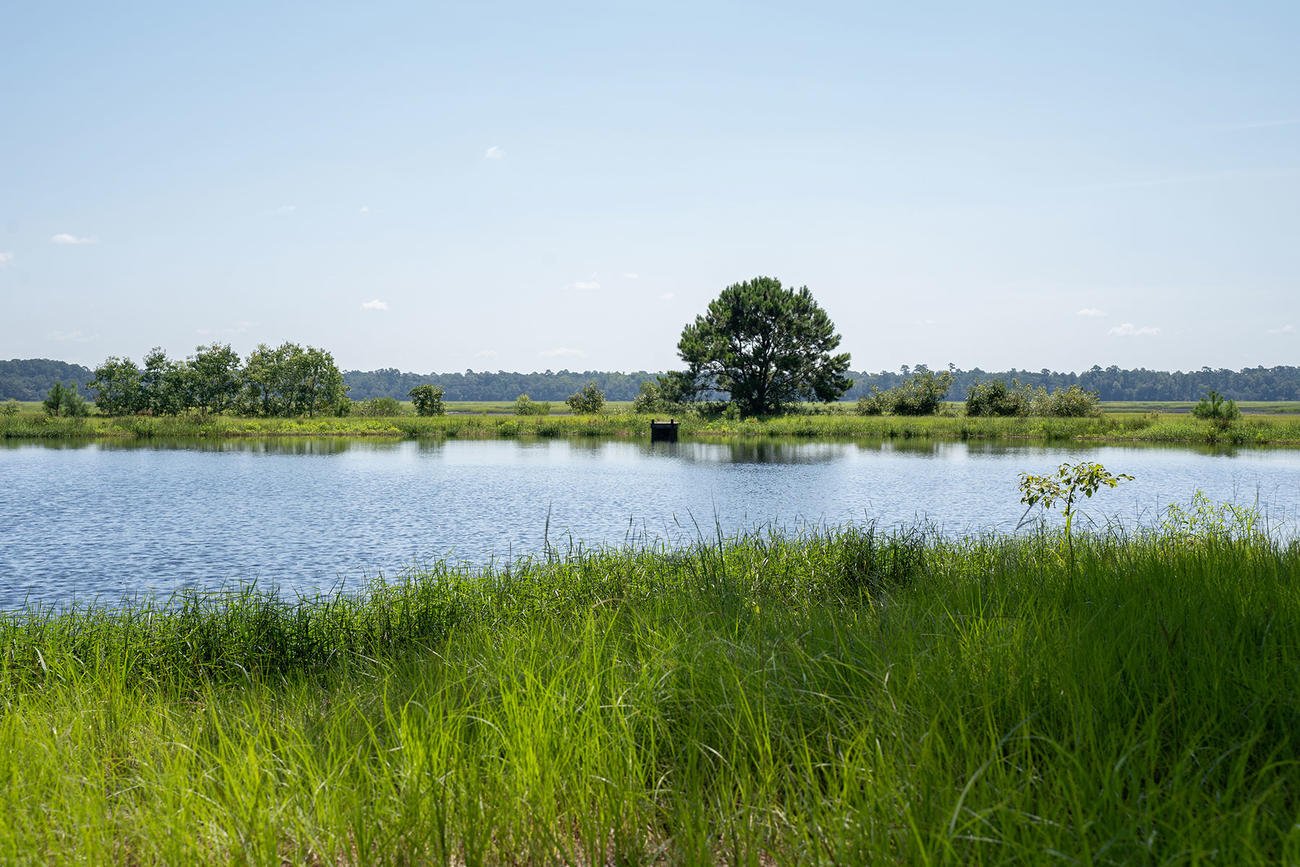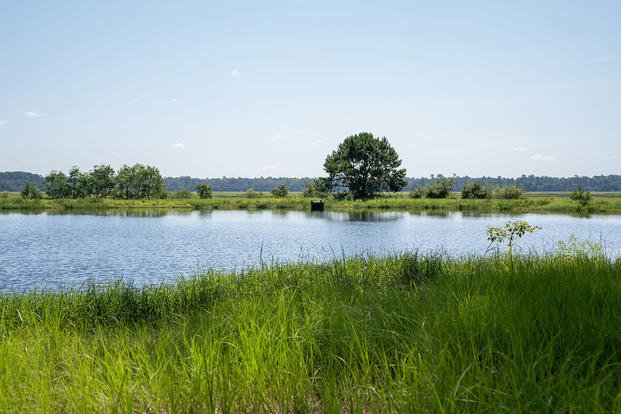

The permanent protection of over 4,000 acres of land, lush with forests and marshes and settled between miles of riverfront, is a win-win for a pair not typically thought of in tandem: conservation efforts and military readiness.
But in Beaufort County, environmentalists and military personnel have worked together for decades to conserve land. Recently, they turned to Jasper County.
The Nature Conservancy purchased the 4,409-acre Gregorie Neck property, which is in the heart of the Port Royal Sound, for $35 million on Feb. 14. The Conservancy and the Beaufort-based Open Land Trust finalized the private conservation easement for Gregorie Neck on July 25.
Nearly as large as The Sea Pines Resort on Hilton Head Island, Gregory Neck is considered one of the biggest undeveloped waterfront properties in the state and sits on a peninsula with deep-water access of the Coosawhatchie and Tulifinny rivers. It extends along 1.7 miles of I-95.
Dotted with only a historic estate, three houses and a horse stable, the 4,409-acre property fronts 13 miles of river. It’s marked with dense upland forests of pine and hardwood trees, fishing ponds full of bass and bluegill, 30 acres of shrimp ponds that are home to migratory waterfowl and wading birds.
Largely undeveloped, the Gregorie Neck tract is also a suitable overfly zone for training pilots flying out of Marine Corps Air Station Beaufort. The now-conserved stretch is dark, clear and quiet, passing over farms and forests.
Gregorie Neck is the latest piece in the puzzle of permanently protected landscapes between the Savannah River and ACE Basin, which is named for the Ashepoo, Combahee and Edisto Rivers that meet in the St. Helena Sound. It joins the surrounding 19,000 acres of conserved land.
Marrying together military land and air space protection principles with the conservation values of preserving river frontage and critical habitat? “Gregorie Neck is the perfect project,” said Kate Schaefer of the Open Land Trust.
Conservation efforts
Despite Gregorie Neck’s location in Jasper County and the land only for private use, the trickle down effect to neighboring Beaufort County and its residents is enormous.
“If you fish in the Broad River, put your boat in the water, if you drive over the Broad River Bridge, the downstream benefits are real to everyone,” Schaefer said.
Restricting development is the key to keeping the Port Royal Sound clean and accessible.
“The water quality and the health of the Port Royal Sound right now is incredible. It’s enviable,” Schaefer said. “If we slice up our landscape, if we develop our marsh front, if we put roads and rooftops adjacent to this high water quality system, water quality will decline. We will lose that asset, and it’s an asset we can’t afford to lose.”
With Gregorie Neck sandwiched between the Coosawhatchie and Tulifinny rivers, not developing along the river frontage allows the ecosystem to naturally ebb and flow downstream.
As sea levels rise and marshes migrate, current marsh will become open ocean and today’s maritime forests will shift into future marsh, Schaefer said. Undeveloped land allows the coastline to interact innately as Mother Nature changes, protecting it without having to build up sea walls in defense.
Under the conservation easement agreement, the land can be subdivided seven times, each no less than 250 acres. That does not mean residential subdivisions, golf courses or commercial developments in an industrial park. Or the next Margaritaville.
Instead, the easement’s guidelines give the rights to have agricultural spaces, farms, forests, equestrian fields, the growth and harvesting of timber. Additionally, there are provisions to build a couple of houses for residential use, Schaefer said.
“We’re not talking about a residential subdivision,” Schaefer said. “The point there is that we’re not fragmenting the habitat.”
While the Gregorie Neck property is under a private conservation easement, meaning it does not require public access, Schaefer said the private landowner could choose to open it up for special outings. Regardless if it ever opens to the public, the property’s protection is far reaching.
“I never need to set foot on the property to feel those water quality and habitat benefits,” Schaefer said.
Military readiness
From a birds-eye view, the Gregorie Neck tract is the perfect training air space for pilots making the 82-mile flyover from the MCAS Beaufort to the Townsend Bombing Range in Georgia.
The “unencumbered” and “unencroached” stretch allows pilots to train in a “relatively realistic and unrestricted manner,” said Mary Ryan Krieger, community plans and liaison officer for MCAS Beaufort.
Development near an air station can inhibit a pilot’s sight and hearing — like a factory that emits sound, light and smoke pollution. It “can restrict their training ability, or they have to avoid certain areas because of noise,” Krieger said. “It’s public safety issue.”
In Beaufort County, environmental groups and the military have been working together for nearly two decades. The United States Navy and Beaufort County entered a “encroachment protection agreement” in September 2006, which works to limit incompatible development for MCAS Beaufort by purchasing and protecting nearby property. The Open Land Trust was added to the agreement in 2008.
Over the past 18 years, partners have protected over 6,000 acres of Beaufort County land with easements, Krieger said. Adding the Gregorie Neck win means between Beaufort and Jasper counties, nearly 10,500 acres are forever-saved by these groups.
Prior to Gregorie Neck, a $2.2 million conservation easement covering the 488-acre ” Bowers Farm,” located north of a runway at MCAS Beaufort, was preserved by the Department of Defense and the Open Land Trust in August 2023. And in January 2022, the U.S. Department of Defense and Beaufort County purchased a conservation easement on 2,068 acres near Beaufort for $5.8 million. Known as ” Oak Point,” the property is a peninsula on the Wimbee River in the St. Helena Sound with 18 miles of river frontage north of MCAS Beaufort.
“We now have the opportunity to work with even more partners and work at a broader scope, which is important for resiliency efforts as much as it is for conservation efforts,” Krieger said.
Gregorie Neck’s history
The expansive tract was named for Alexander Gregorie, who purchased the plantation in 1798.
Gregorie Neck served as a strategic plot, nearby the Charleston-Savannah Railroad, as disrupting the vital Confederate supply line was the Union objective that launched the Battle of Tulifinny.
For the past 30 years, Robert and Alice Jepson owned Gregorie Neck. Charleston-based Holcombe, Fair & Lane’s initial July 2023 listing noted the Yemassee property would be a “prime candidate” for a conservation easement.
In February, The Nature Conservancy purchased Gregorie Neck for $35 million. The Department of Defense’s Readiness and Environmental Protection Integration grant funding program, South Carolina’s Conservation Bank and the Beaufort County Green Space Program were funding sources
___
(c)2024 The Island Packet (Hilton Head, S.C.)
Visit The Island Packet (Hilton Head, S.C.) at www.islandpacket.com
Distributed by Tribune Content Agency, LLC.
© Copyright 2024 The Island Packet (Hilton Head Island, S.C.). All rights reserved. This material may not be published, broadcast, rewritten or redistributed.
